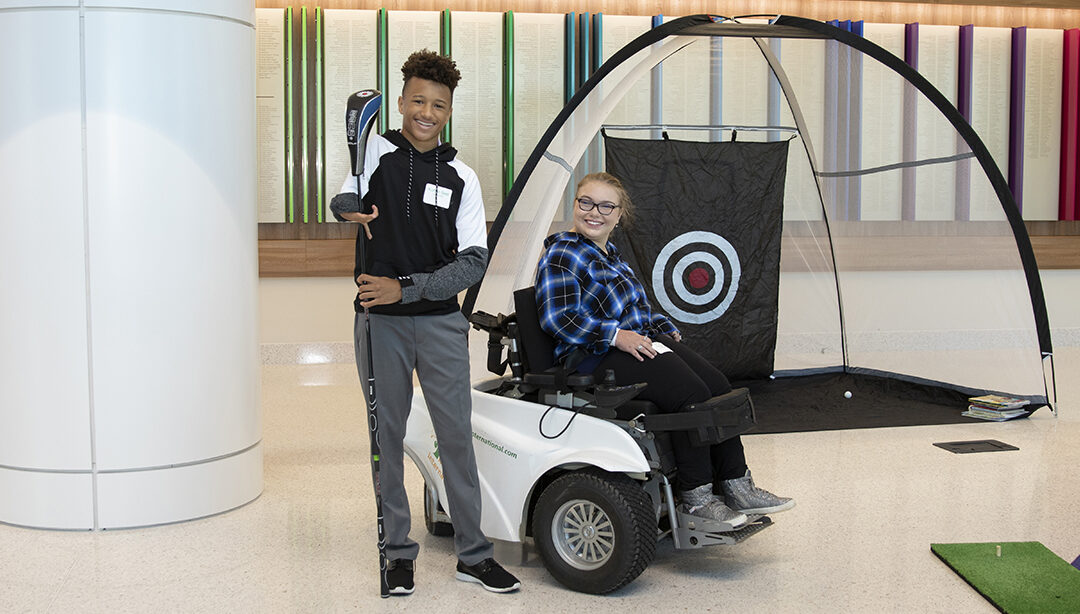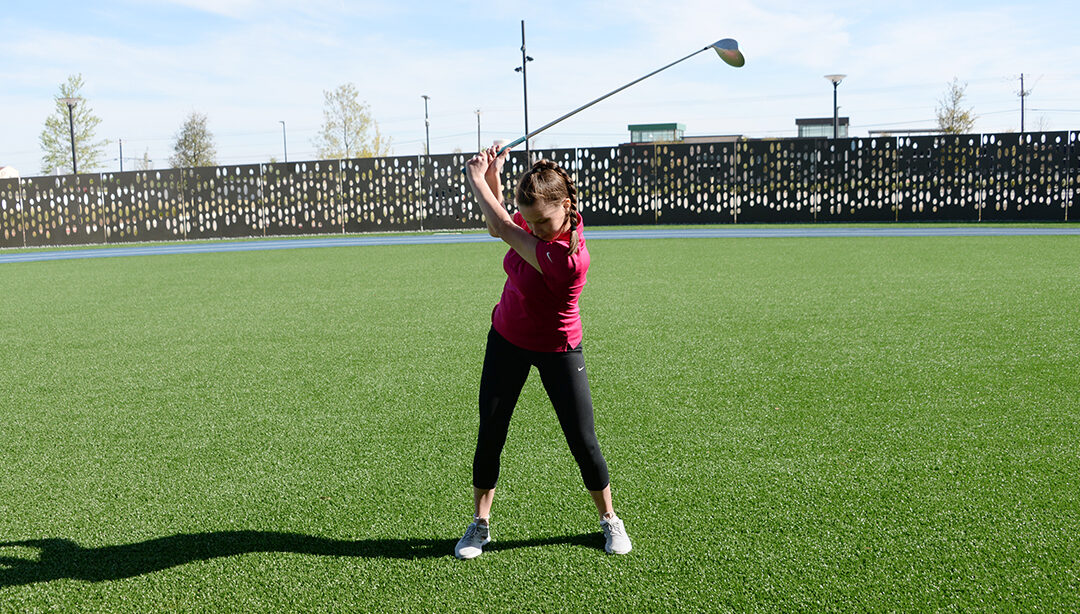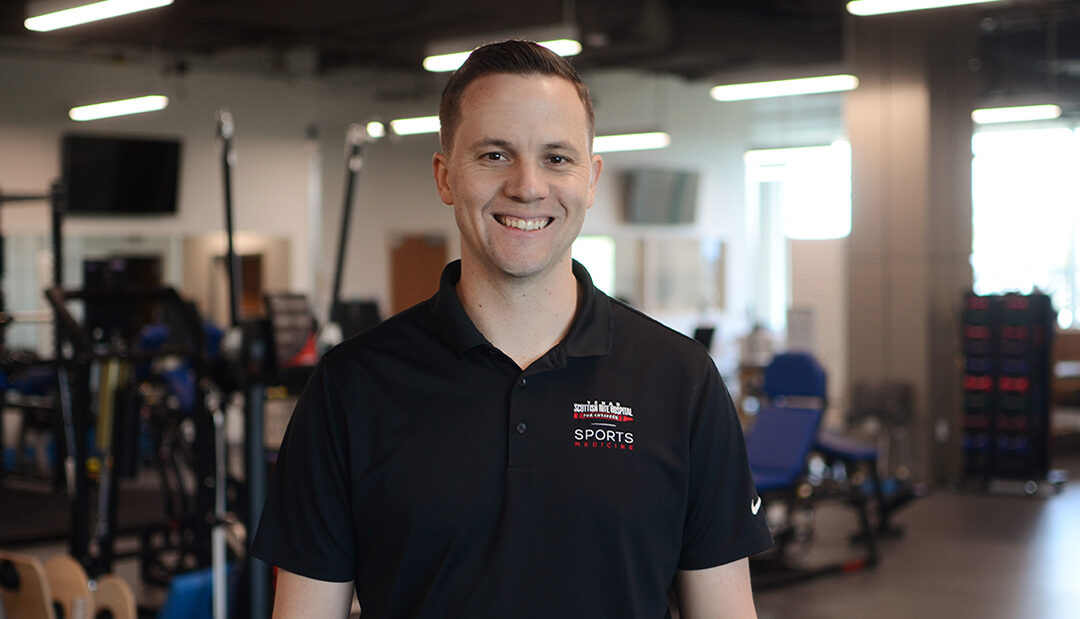
Golf Community Comes to Frisco to Talk About Inclusion
Korban and Jordan are golfers thanks to programs designed to introduce and teach children with different abilities. Director of Therapeutic Recreation Dana Dempsey, M.S., CTRS, has organized Learn to Golf for our patients for more than twenty years. Through this program, patients like Jordan and Korban are given the tools and encouragement that allow them to play golf with their abilities, not in spite of their disabilities. More importantly, through golf, they both express they have learned some priceless life lessons.
Korban, 16 of Southlake, TX, was first introduced to golf by his dad, an avid golfer. “I started going to the driving range with my dad,” he said. After Learn to Golf, Korban was motivated to continue the sport. His dad, Roger described, “Because of golf, he started getting the confidence to try other sports.” Korban now plays corner on the football team and runs the 100 meter for the track team at Southlake Carroll High School. “Golf taught me work ethic and responsibility. Work hard, if you love doing it, keep doing it and try to be at a higher level.” Korban wowed the attendees with his swing and says he can hit the ball more than 200 yards using his custom, extended club.
Jordan, 15 of Henderson, TX, laughed a little as she tried to remember the first time she played. She said golf has given her the opportunity to enjoy time with other kids and make new friends. She said, “It helps me figure out more things that I can do that maybe I thought I couldn’t do.” Her mom, Lisa, shared how the environment has been unlike school, where Jordan feels included and she is picked to be on a team because of her abilities. Turns out, everyone wants Jordan on their team because she has some solid putting skills!
Johnny Knight, PGA Professional, and owner of Kingdom Golf, was present when Jordan first attended a Learn to Golf clinic in 2016. He noticed how much her personality has blossomed. He shared how using a ParaGolfer chair gave her an opportunity to evolve her swing from a two-handed to a single-handed swing. The attendees talked about changing the model for teaching golf to children with different abilities.
This initiative of the National Alliance for Accessible Golf brought together a passionate group of individuals to evaluate the current model of youth golf programs and discuss the future of an inclusive golf community. Gianna Rojas, founder of Adaptive Golfers and known as the “One Handed Lady Golfer,” contributed her personal experience as a world ranked golfer with a disability. PGA executives in attendance expressed how this project aligns perfectly with current initiatives in their organization and how excited they were to participate and contribute.
The team committed to these next steps:
- Incorporate kids with disabilities in PGA Jr League future content.
- Identify NTPGA and PGA Jr. League captains who will welcome kids with disabilities.
- Coach Jr. Golf League team for players with different abilities
- Discuss making the 10-hole short course at PGA Frisco ADA accessible.
- Develop a video project that includes instructions, promotion and success stories to increase visibility of children with disabilities playing golf.
- PGA Jr. League will start to measure children with disabilities being served.
- Increase advocacy and visibility for children with disabilities to play golf.
- Provide more instructor training sessions geared to increasing their knowledge and skills for working with differently abled children to play golf.
We look forward to watching their progress and sharing it with you. Learn more about the programs mentioned above at these links:


